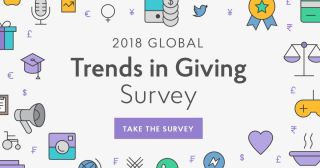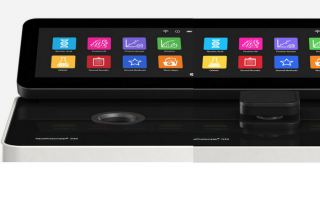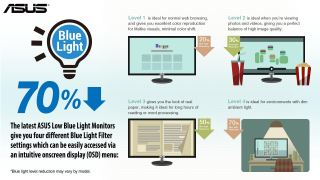Bateleur Restructures its Shareholding
In August 2021, Bateleur Brand Planning announced that it had increased its shareholding amongst existing shareholders Kim-Lee de Vries (Marketing Director), Talya da Silva (Production Director) and Gordon Hooper (Managing Director). As a consequence of an exiting shareholder, 40% of Bateleur’s shares have been released and balanced across all business functions. As such, all aspects of the business are now in the hands of its owners.
This restructure is part of a company ambition to bring a youthful shot in the arm and shift the company demographic profile towards younger female partners. Michelle Steyn, Data Collection Director at Bateleur, also forms part of the shareholder partnership and supports the restructure for many reasons, including where the marketplace is moving. Overall, the primary inspiration for the restructure is the desire for Bateleur to continue to grow and better serve its customers and thereby reward its shareholders perpetually into the future. And the partners believe that it will improve synergies and empathy between Bateleur and its customers as well as staff and suppliers.
Managing Director of Bateleur, Gordon Hooper, started the business 33 years ago. He expressed, “I have always believed that it is a common mistake made by many entrepreneurs to hang on to their creations far beyond their sell-by dates. One cannot possibly hope to grow a business beyond one's self if you are not prepared to share it with those integral to the business’s success.”
Hooper is embarking on a five-year programme of succession planning and development. He turns 65 next year and aims to relinquish his role as Managing Director either on or before his 70th birthday. The existing shareholders are obvious candidates to take over the managing directorship of the business and are being groomed for this eventuality.“
The shareholder partnerships have been founded on the culmination of trust and camaraderie gained only through sharing the ups and downs of a long journey and many years of experience of working together. They have earned their worth over many years as earnest employees and latterly partners in the business,” added Hooper.
Both de Vries and da Silva are fully aligned to the company’s future vision. They have a vested interest in the business, ensuring the highest possible degree of quality and service to Bateleur's customers, and possess the passion for driving the company forward for sustainable success.
South Africa's future consumers and business leaders are young and ethnically proportioned in similar ratios to the country’s demographics. “Strategic imperatives to profile shareholders, directors and employees in line with the country's population profile makes good business sense if one is in the insights business. ‘It takes one to know one’ is an idiom used mostly in the negative sense but is certainly true in all directions. Without a congruent demographic profile, a research company can't deliver truly relevant insights about the marketplace and the workplace. But it is not only for reasons of repairing the damage of the past, but also relevance for the future that have driven this strategic directive for our business,” concluded Hooper.
Research and Development for a Better Tomorrow
Whilst headlines globally are sounding more and more like the Doomsday Reckoning, with dire warnings of worse to come and graphic images depicting the suffering from droughts to floods, earthquakes to rampant wildfires, questions are being asked of what should we be doing?
It’s not just government who need to play a role or just corporates, industry or the end user – but the whole world needs a new way of thinking and doing.
This has been Biodx’s quest since their arrival on the biotech scene 16 years ago with its slogan of ‘relentlessly enabling a better world’. With their DECONT-A ™ and b bioactive™ having entered the commercial field in 2018, 90% of the company’s focus has gone into bringing this technology to market. But the good news is that the remaining 10% is still firmly focused on research and development.
Current research programmes
According to Burt Rodrigues, CEO of Biodx, “We’re currently researching two new programmes, with the emphasis being on producing a 100% natural biocide, strictly focused on life sciences. Our search to find natural anti-microbial compounds is ongoing. It has to come out of the field of life sciences and not the natural sciences, using no synthetic compounds at all. Currently although our products are 99.998% natural they are a blend of natural science and life science, which isn’t optimum.
"Our previous research has taken us a long way down the road into using natural biocides, but now we’re working on researching a second surfactant (a substance which tends to reduce the surface tension of a liquid in which it is dissolved) strictly through life sciences.
“Research and Development is what builds the future and is one of the reasons people get up in the morning. Whilst we’re seeing massive global changes no-one really understands exactly what’s going on. Archaeologists and other academics have presented some evidence of what might have happened in the Bronze or Ice Ages, bringing those civilisations to an end, but we still know little and without evidence how do we know what caused this? Is history simply repeating itself? History has a way of disappearing sometimes, without leaving any guidelines on how to do things better. Did pollution cause any of these early disasters? We don’t know - but we can contribute to changing our world. To make our world a healthier, improved version for all living things.”
One thing is for sure, Biodx is not resting on its laurels – it’s firmly seeking out how to bring a better, safer and more natural world to everyone.
South Africa participates in largest crowdsourced Global Giving survey to empower NPOs
With over 150 000 charity organizations in South Africa, it is clear to see why we are known as a warm-hearted nation. With so many non-profits doing their part to elevate their various causes, it is the perfect time to dig deeper and investigate our unique stance on philanthropy.
A new survey, put together by Non-profit Tech For Good is hoping to provide insight into our budding non-profit sector through the 2018 Global Trends in Giving Survey. A report which will be the first of its kind.
The survey, available in five languages; Arabic, English, French, Portuguese and Spanish, aims to crowdsource the largest global survey of individual donors ever, partnering with 21 Non-profit organizations to better understand generosity in the charity space.
Representing South Africa in the study, which is already in circulation, is donations based crowdfunding platform, BackaBuddy, a strong contender in social giving. The organization has raised an astounding R65 Million for charities and individuals alike.
“The goal of the 2018 Global Trends in Giving Survey is to gain a better understanding of how donors worldwide engage with causes and charities that resonate with them. Partnering with BackaBuddy we hope to gage an understanding of the ‘spirit of Ubuntu’ in the emerging market that is South Africa” – says Non-profit Technology Trainer, Heather MacDonald
We would like to encourage South Africans to join the conversation and lend their voice to the report. The results will allow our charities an opportunity to learn from each other and align themselves with latest the market trends to better serve our community.
The survey is 100% anonymous and only takes 5 minutes to complete. Click here: https://givingreport.ngo
Mobile Spectrophotometry that expands research beyond the limits of the lab
UV/Vis-Spectroscopy is the most popular analytical tool in fields such as clinical chemistry, the pharmaceutical industry, research and very often in quality assurance. This is mainly due to advantages such as low time and labour consumption, precision and reproducibility. Nano-spectrophotometric equipment takes this one step further with the ability to preserve sample material by using very small volumes and introduced equipment that is much easier to use. United Scientific, being the sole distributor of Implen Nanophotometer in South Africa, supplies the Nanophotometer range of that takes usability and precision to the next level with features such as
- On device touch screen display
- On board processing,
- Limitless spectroscopic applications that include methods such as Nucleic Acids, Protein UV, Protein Assays, Kinetics, OD600 Cell Density
- Interoperable with a number of devices such as desktop PC , Android and iOS devices.
- Flexible data transfer with Wi-Fi, USB A/B, HDMI and LAN
- Sample and Blank control features to ensure precision and reproducibility.
How your Lab will benefit from acquiring an Implen Nanophotometer.
Buy one and use everywhere
The Implen NanoPhotometer series is ultra portable with a very small size of 20cm x 20cm x 12 - shorter than a 30 cm ruler down the length and width - and weighs less than 5 kg. Each unit have has a build built in, high performance computer with 8 GB of onboard memory. This means that it can easily be moved between labs or buildings on the same premises, eliminating the need for the cumbersome installation of individual units, and an excellent investment for shared instrument labs. Further, each unit in the range can be fitted with a battery that lasts up to eight hours, making it suitable for fieldwork and useful in temporary lab setups.
Efficient use of Sample material
Implen Nanophotometer offers the highest degree of accuracy with the smallest sample of volume, as little as 0.3 microliters, making it the perfect solution for analysing lower volumes at lower concentrations in order to save precious sample material. Microvolume methods removed the requirement for dilution by directly assaying the sample. A capillary film is formed between two quartz surfaces with each analysis, eliminating the need for surface tension and ensuring that the sample is compressed to two precisely defined path lengths without being stretched.
Connect your audience with multiple devices
The Implen NanoPhotometer range allows users to engage a range of audiences live, to observe experimental output on multiple devices such mobile phones, tablets and flatscreens with connectivity options that includes wifi, lan and usb. This makes Implen Nanophotometer ideal for classroom and conference presentations, fieldwork and lab demonstrations.
Certainty, efficiency and accuracy
The Nanophotometer range incorporates physical and technological features that protects samples from contamination and evaporation and detects anomalies such as air bubbles, sample impurities, turbidity, lint residue, high background and residues from previous samples and other potential contaminants and interference. This includes the patented Sample Compression Technology that shapes and seals liquid samples into a precisely defined flat layer of even thickness.
Smart Solutions for smart labs
There are many challenges to performing clinical research in resource-limited settings. Considerations that need to be addressed can include size, space, data communications networking and access to equipment for multiple teams. The Implen nanophotometer was designed specifically to address such concerns, being compact, easy to set up, standalone portable and allowing plug and play data sharing. The quartz heads is easy to clean, simply wipe it with a microfibre cloth to remove all traces of the sample. Implen’s trust in appointing United Scientific as the sole agent for equipment such as the Nanophotometer range cements our status as the equipment and scientific instrument supplier of choice for smart laboratories in Southern Africa.
Toblerone, the US Elections and the South African Consumer
“All the dazzling technology, the big data and the sophisticated modeling ….could not save American journalism from yet again being behind the story…”
“Data is Dead”
Media commentators on the failure of the news media to predict a Donald Trump victory in the latest US Presidential elections.
“This idiocy from a company based in a country that offers its electorate the choice of president between a liar and a bully.... Well done Mondelez you just don't get it do you... you've taken yet another confectionary (sic) icon and have trashed it.”
A Facebook post after the manufacturers of Toblerone decided to reduce the size of its iconic triangular product and increase the gaps between the chocolate triangles.
Are South African FMCG retailers and manufacturers also guilty of “just not getting it” to the detriment of their relationships with customers?
Viccy Baker of Retail Price Watch, the consumer website which gives customers more choice when it comes to their purchase of household goods, believes that there is a profound disconnect between what customers expect from their brands and retailers, and what is being delivered.
“There is a plethora of research houses and an alphabet soup of acronyms and buzzwords serving the retail industry in this country.
“Amidst all this noise the consumer’s trust in brands is rapidly disintegrating – and nobody seems to notice. Just three factual articles published by us in the online press about FMCG issues this year attracted 150 negative comments and fewer than five positive comments about retailers, from consumers.
“I think that there is outright profiteering going on with regard to food. Not to mention price fixing.”
“Let’s burn all the supermarkets.”
“So beware specials, very often the only special about them is that they are not special.”
“Bunch of scammers.”
There is general agreement that online comment on news stories represents the lowest level of communication. Nevertheless the simmering resentment that people feel against certain issues first rises to the surface here and on social media, and hard lessons have been learnt about ignoring it.
Baker cites recent examples of manufacturers and retailers riding roughshod over consumers.
“Bruce Whitfield spent more than five minutes berating Toblerone on the 702 Cape Talk Money Show last week, yet this is only one of more than 50 examples of “shrinkflation” recorded by our website over the past two years. Toblerone is an exception in that it at least took the trouble to inform its customers of the impending changes. In most instances neither manufacturers nor retailers bother. The barcode remains the same despite the change in the product, directly against good retail practice.
“Pick n Pay Tuna for Cats jumped in one month from R9.99 to R17.99, an 80% increase with no apology or explanation.
“Ritebrand Rooibos Tea 80 units sold by Shoprite, has increased in price by 54% since November last year, from an average of R18.19, to an average R27.99. This is shocking enough, considering that Rooibos tea is a 100% South African product. Yet 80 units of Lipton tea are now selling for an average R53.56, 106% more than November last year. No justification from the manufacturer or the stores, although Unilever declares it is “redefining” sustainable business practices and trying to keep jobs alive.
“Some Spar stores are now selling Snowflake flour 2.5kg for R32 a bag, and on average Spar’s cost of Snowflake is more than 23% higher than it was this time last year. Spar recently introduced a house brand canned mushrooms 285g tin. In fact the proportion of mushrooms in the can is 40% - meaning that the consumer is paying for 60% salt water!
“Woolworths, infamous in many people’s minds for its high prices, shows far greater consistency in its pricing. Presumably consumers are prepared to put up with high prices in return for a level of trust in this retailer.
“In a basket of 20 national brands measured over a 3-month period this year, Woolworths changed the price of five products. Checkers changed the price of all 20 products, multiple times, as did Pick n Pay and Shoprite, with Spar close behind. Although some of the price movements were down, this often followed a steep hike (in one instance of 48%).
“Bewildered consumers now feel they enter these stores on the defensive, and the sight of merchandisers with long rolls of PI labels moving down the aisles fills them with a sense of panic.
“In contrast, when the price of sugar rose by 15%, Makro (not always blameless in its treatment of consumers) took the trouble to inform its customers well in advance so they could stock up before the price hike hit. This made good business sense for Makro and also put it into a favourable light with its customers.
Baker believes that loyalty programmes and specials have become ways for the consumer to feel he/she is “getting back” at the retailers, and are not in fact gaining greater brand loyalty.
“The researchers got it wrong when they dismissed Trump supporters as being un-American. Toblerone got it wrong by trying to cover a bitter pill with a sweet coating. There is a wave of civic action spreading throughout South Africa. Will it eventually reach the consumer sector?
ASUS gets experts to weigh in on Ergonomics
Johannesburg, South Africa – If your job requires you to sit at a desk behind a computer or laptop, this article is for you. We all know that we have to sit properly, a certain distance from your screen and type at a specific angle. It sometimes seems impossible to have an ergonomic workstation due to space and financial restrictions. However, by adapting to your environment and making changes you will realise the drastic effect it can have on your life. After all, you probably spend more time in your office than out of it. ASUS South Africa decided to get the insights of various industry experts to share some practical tips and tricks for computer users (even those who don’t use ASUS products):
- Eyes and View-Points
First and foremost, if you wear glasses or have glasses to wear behind a computer screen, wear them! Often we sit behind our screens for long periods of time causing us to blink less which leads too dry, itchy and scratchy eyes that feel like raisins.
Try to position yourself between 40 and 76 centimetres away from your screen (most users find it most comfortable to sit between 50 and 65 centimetres). Among many things this will help your eyes maintain their blink rate.
When positioning the monitor or screen, set it up on your eye level or slightly below your horizontal eye level. This can be done by purchasing an ergonomic stand. Alternatively, you could improvise and use phone books or reams of paper. Just make sure that the surface is stable and strong enough.
Pay special attention to the surrounding areas of your monitor or table, avoid spaces closes to windows and bright lights as this may cause distracting reflections and additional strain on your eyes.
"Not only are we more dependent on electronic devices but technology can also improve your quality in front of such a device. Anti-reflective lens coatings have been tried and tested and research shows that it can help to eliminate up to 80% of eyestrain and fatigue. Optometrists make use of the newest lens technology to ensure clear and comfortable vision in front of electronic devices", says Carina Janzen, Optometrist from De Jongh Optometry in Pretoria East.
- Seating and Posture
The chair that you sit on is just as important as the computer you use. When purchasing a new chair, always make sure that it is fully adjustable to ensure the support that you require. "It is important that the chair is the correct height relative to the desk", comments Tracey Palay from Ergotherapy. If purchasing a new chair is not an option, you could look at using an inflatable pillow or a towel roll which should provide you with lower back support when placed behind your lower back against the chair.
Position yourself behind your computer in such a way that your spine is able to align with a neutral posture (forward curve in the lower back and forward tilted pelvis), try to avoid leaning forward. Allow your shoulders to be relaxed and not hunched or rounded and your feet resting on the floor/ foot rest. Your elbows have to be close to your body (put away your wings), the ideal position for them is at a 90° bent angle with your wrists and hands remaining straight, forearms resting on the table (not the wrists). Avoid bending the wrists backwards too far when working on your keyboard and mouse.
It is important to consider your posture, as your body adapts to the position you spend your working day in and can have an effect on your wrists, elbows, shoulders, neck, upper back, lower back, gluteal area and lower limbs. Frequent positional changes are key to prevent adverse health effects and muscular weakness.
The therapists from Therapy In Action have been working in the Physical Therapy and Occupational Therapy industry for over 20 years and recommend that computer users pay special attention to the position of their upper back and neck, as poor posture can lead to trigger points, muscle imbalances and lack of stability, which can cause headaches, neck and shoulder pain. "We have noticed over the past year alone an increase of 8% in people complaining about neck tension headaches and upper back pain due to poor ergonomics", Liezet Basson, Partner and Senior Occupational Therapist with Therapy in Action added. - Sitting vs Standing
"Recent studies have shown that standing while working on your computer, have major health benefits. Standing facilitates a decrease in fatigue and musculoskeletal discomfort, especially in overweight office workers. The research has also shown benefits in heart function and blood sugar levels. Weakness and muscle imbalances develop according to your prolonged preferred postures, which can lead to discomfort and pain due to lack of optimal stability. Standing for the entire work day might also have some negative effects on your health, thus a healthy balance between sitting and standing is ideal where possible", added Therapy In Action. - Regular Breaks
It is recommended that breaks are taken every 30 minutes but sometimes it isn’t practical. Try to take your eyes off of the screen and let them rest on another focal point in the distance, like a watercooler in the office or the trees outside your window. If you’re able to get up from your desk try to walk around stretching you back, arms, neck, shoulders and legs at least once every hour or two as this will get the blood flowing again.
As with almost all aspects in life, there are various Apps that can be downloaded to remind you to take regular breaks. On Android there are a few apps like Take-a-Break or Water Drink Reminder.
Setting up an ergonomically friendly workspace is of benefit to the employee and employer, by reducing ergonomic risk factors costs can be reduced over time and employee productivity should increase. This will also show employees that their employers value their health and safety.
Yolandi Venter, ASUS’ Marketing Manager for System Products focusing on Sub-Saharan Africa, said that ASUS has a variety of products available which accommodate ergonomic needs. "Recently ASUS announced the ZenBook Flip UX360 and UX560 which feature a gently backlit keyboard with full size keys and long key travel for comfortable typing in any lighting condition. The large glass-coated touch pad allows smooth and accurate navigation", Venter added.
"All of our models come with some sort of ergonomic design. For example, all models come standard with ICeCool which keeps the palm rest of laptops and notebooks cooler than your body temperature", said Werner Joubert, Product Head (ACZA). "ASUS Monitors come standard with Eye Care technology which smartly adjusts the computer screen brightness based on the environment you are in. These monitors are designed to prevent symptoms of CVS (Computer Vision Syndrome). Symptoms include Headaches, Burning Eyes, Red Eyes, Eyes Strain and Fatigue, should you, a colleague or an employee have these symptoms its highly recommend to seek medical attention. Furthermore, the Monitors have Low Blue Light, are Flicker-Free, have Anti-Glare and are designed to meet ergonomic requirements", Joubert added.
ASUS South Africa would like to thank De Jongh Optometry, Therapy In Action and Ergotherapy for assisting in the construction of this story.
ABOUT ASUS
ASUS is a worldwide top-three consumer notebook vendor and maker of the world’s best-selling, most award-winning motherboards. A leading enterprise in the new digital era, ASUS designs and manufactures products that perfectly meet the needs of today’s digital home and office, with a broad portfolio that includes motherboards, graphics cards, optical drives, displays, desktop and all-in-one PCs, notebooks, netbooks, servers, multimedia devices, wireless solutions, networking devices, tablets and smartphones. Driven by innovation and committed to quality, ASUS won 4,368 awards in 2015 and is widely credited with revolutionizing the PC industry with its Eee PC™. ASUS has more than 17,000 employees around the globe with a world-class R&D team of over 5,500 engineers. Company revenue for 2015 was approximately US$14 billion.
REFERENCES:
- Thorp, A.A, Kingwell, B.A, Owen, N, & Dunstan, D.W. (2014). Breaking up workplace sitting time with intermittent standing bouts improves fatigue and musculoskeletal discomfort in overweight/obese office workers. Journal of Occupational and Environment Medicine (71) 765-771.
- Water, T.R & Dick, RB. (2014). Evidence of Health Risks Associated with Prolonged Standing at Work and Intervention Effectiveness. Journal of Rehabilitation Nursing. (40) 3: 148-165.
- Antle, D.M., Vezina, N. & Cote, J.N. (2015). Comparing standing posture and use of a sit-stand stool: Analysis of vascular, muscular and discomfort outcomes during simulated industrial work. Journal of Industrial Ergonomics (45) 98-106.
NOTES TO EDITORS
- ASUS Global Press Room: http://press.asus.com
- ASUS South Africa Facebook: https://www.facebook.com/ASUSza
- ASUS South Africa Twitter: https://twitter.com/ASUS_za.






